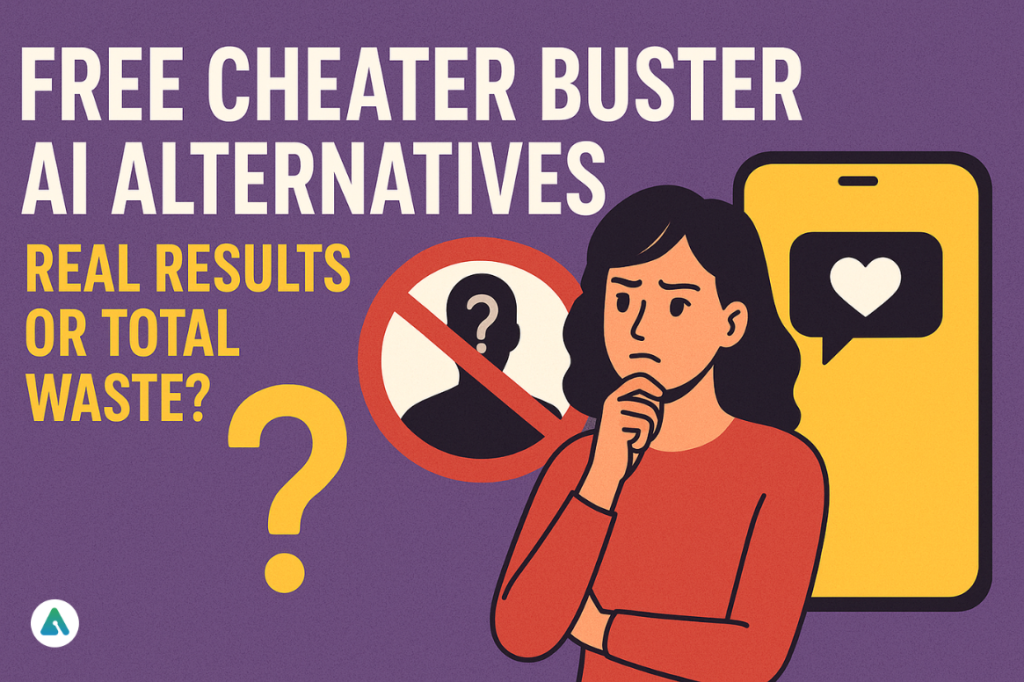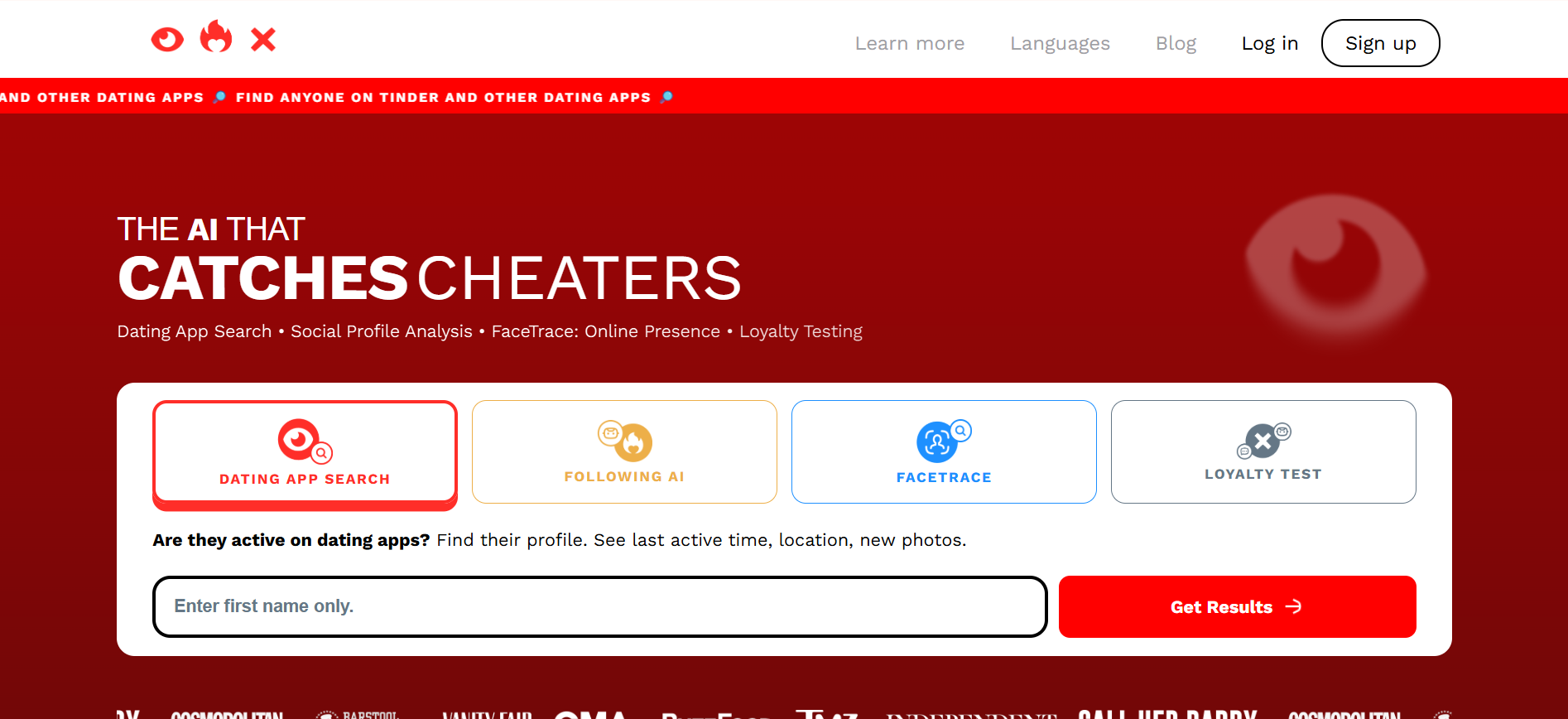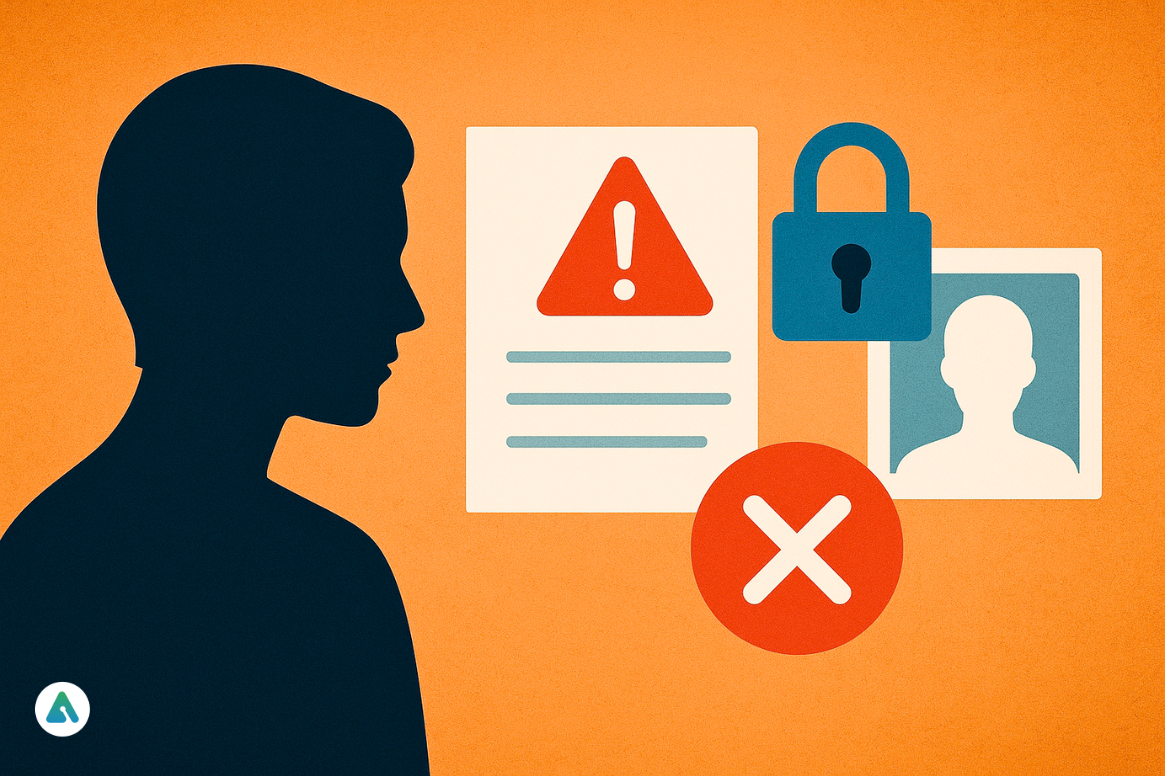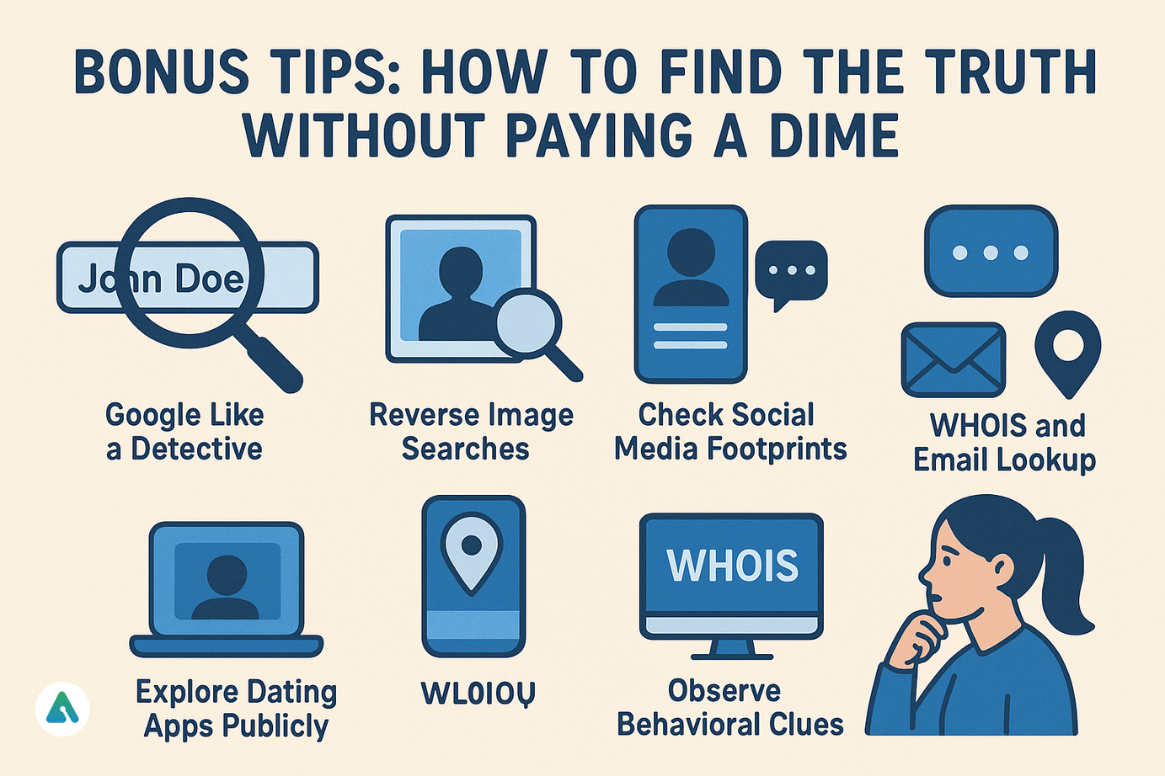Let’s be honest — relationships in 2025 are tricky. Between ghosting, soft-launching, and “exclusive-ish” situationships, trust often feels like a guessing game.
And what happens when doubt creeps in? When their phone suddenly goes face down, notifications disappear, or their online energy feels… off?
In the past, uncovering infidelity meant hiring private investigators or relying on gut instinct. Now, AI tools like Cheater Buster AI promise instant truth — revealing hidden dating profiles with just a few clicks.
But here’s the catch: most of these “free” tools aren’t really free. And diving in without knowing the risks can lead to emotional, ethical, or even legal trouble.
This guide breaks it all down: the real capabilities of Cheater Buster AI, low-cost and free alternatives that actually give results, and practical ways to uncover the truth safely — no credit card required.
What’s the Hype Around Cheater Buster AI?
Cheater Buster AI became an internet sensation because of its promise: enter a name, age, and location, and instantly see if your partner has a Tinder account.
It’s a seductive offer — quick truth for a small price. But here’s where the reality hits:
- It’s not free. Basic searches cost around $17–$18.
- The data is limited. You may not get full details like photos or timestamps.
- It can’t access private or deleted profiles.
Many users report mixed results, ranging from genuine discoveries to dead-end leads. That’s why people started hunting for cheaper or “free” alternatives — hoping to get similar insights without paying.
The Truth About “Free” Cheater Buster AI Alternatives
Let’s cut through the marketing fluff: most “free” alternatives only look free. What they actually offer is a teaser search — they’ll confirm that something exists under a name or number but lock the real results behind a paywall.
Still, some options are cheaper, more transparent, or give limited useful data before payment.
Here’s a breakdown:
CheatEye AI
- Reality: Paid tool with limited preview results.
- Cost: Around $10–$15 per detailed search.
- Why it matters: Faster results and a cleaner interface than Cheater Buster.
- Best for: Users who want verified profiles, not endless partial data.
ProfileFinder.ai
- Reality: Paid-only platform, no free trial, but highly accurate.
- Strength: Scans across multiple dating platforms, not just Tinder.
- Use with care: Excellent technology, but transparency about data sourcing is key.
Social Catfish
- Reality: Limited free previews; full reports are paid.
- Edge: Great for confirming identity and avoiding catfish scenarios.
- Ethics: Uses public records, which keeps it compliant and privacy-safe.
Spokeo
- Reality: Public-record search with low-cost reports.
- Use case: Good for verifying someone’s digital footprint, not active dating profiles.
PimEyes
- Reality: Facial recognition that finds where a photo appears online.
- Ethical caution: Using it to track partners raises serious consent issues.
- Best used for: Identity verification, not private surveillance.
The Essential Ethical and Legal Disclaimer
Before you go any further, this part matters most.
Using AI tools to search for your partner’s hidden profiles is not a harmless curiosity — it can easily cross into unethical or even illegal territory.
- Consent is non-negotiable.
Running someone’s photos or data through AI without permission is a privacy violation. If you’re doing it secretly, you’re not just breaking digital norms — you’re eroding trust. - AI results are not always accurate.
False positives happen. An incorrect match could lead to false accusations and emotional fallout that’s impossible to undo. - Facial recognition and surveillance tools are controversial.
Platforms like PimEyes have been criticized by digital rights organizations for enabling stalking and harassment. - Emotional damage cuts both ways.
If you feel the need to “check,” it signals that communication and emotional safety might already be broken. No amount of AI can fix that — only honesty can.
Bottom line: Use these tools responsibly, transparently, and only as a last resort. The goal should be clarity, not control.
Low-Cost Alternatives to Cheater Buster AI
| Tool | Free Trial | Accuracy | Privacy & Ethics | Main Use Case | Cost Range |
| CheatEye AI | Paid, no free trial | High | Moderate | Dating profile scans | $10–$15 |
| ProfileFinder.ai |
Paid, no free trial |
Very High | Moderate | Cross-platform identity check | $15–$20 |
| Social Catfish | Limited preview | Medium | High | Online dating & identity search | $5–$20 |
| Spokeo | Partial data | Medium | High | Public record checks | $2–$15 |
| PimEyes | Free lookups | High | Low (privacy risk) | Facial image search | Free–$12 |
Why AI Relationship Tools Are Exploding in 2025
The rise of AI relationship surveillance isn’t random — it’s a cultural mirror. We live in an era of hyper-connectivity and emotional distance.
Gen Z and Millennials are redefining love through terms like situationship, soft launch, and exclusive-ish. Technology fills the gaps that trust leaves behind.
But it’s also blurring moral lines. The same tech that helps us spot deceit also tempts us into paranoia. AI can’t fix insecurity; it only amplifies it.
Free Cheater Buster AI: Bonus Tips to Uncover the Truth Without Spending a Dime
Sometimes, tech can’t replace a sharp eye, critical thinking, and a little digital detective work. If you’re hesitant to pay for AI tools or just want to double-check on your own, there are clever ways to sniff out the truth—without spending a single cent. Here’s how you can start your own investigation using just Google, social media, and some savvy observation:
1. Reverse Image Search Is Your Secret Weapon
Have a suspicious photo from your partner’s social media or a dating app? Use Google Images or TinEye to see if it pops up elsewhere online. You might discover old profiles, duplicates, or even catfishing attempts. It’s free and surprisingly effective.
2. Use Google Like a Pro Detective
Don’t just type their name—get specific. Combine first and last names with cities, schools, workplaces, or even usernames. Quotes (“John Doe”) narrow results to exact matches, while a minus sign (-) can filter out unrelated profiles. The more you refine, the higher the chances of finding clues.
3. Check Social Media Footprints
Many cheaters leave subtle traces: tagged photos, public comments, or mutual friends’ posts. Scan Instagram, Facebook, and TikTok. Look for patterns—sudden disappearances, new friends, or mysterious likes. Sometimes, small inconsistencies tell the bigger story.
4. Free People Search Sites
Sites like WhitePages, FamilyTreeNow, or TruePeopleSearch can reveal public info: old addresses, phone numbers, and past connections. Pair this with social media sleuthing to spot red flags or confirm details without paying for premium services.
5. Observe Behavior Patterns
Digital clues are powerful, but don’t ignore the human side. Notice late-night texting habits, secretive phone behavior, or sudden changes in routines. When combined with online investigation, these behavioral cues often paint a clearer picture.
6. Keep It Ethical
Here’s the kicker—you can dig for answers, but don’t cross the line into harassment or stalking. Use publicly available info responsibly. Sometimes, the goal isn’t to catch them red-handed, but to confirm your instincts before having an honest conversation.
7. Document Everything
If you do find suspicious activity, screenshot, note dates, and keep a record. It’ll help you make sense of patterns instead of jumping to conclusions based on a single post or message.
By using these free, manual techniques, you can uncover hints that AI tools like Cheater Buster AI promise—without emptying your wallet. And if your search comes up clean? That’s even better: peace of mind, proof of loyalty, and maybe even a little extra trust in your relationship.
FAQs
Q. Are these AI cheater-busting tools really free?
Not exactly. Most of them advertise “free checks,” but what you actually get is a teaser — a quick data preview or search confirmation. To see real results (like a full name, photo, or linked account), you’ll need to pay a small fee or sign up for a trial. So it’s more accurate to call them low-cost or limited-access tools.
Q. Can I get in legal trouble for using these tools?
In most cases, yes — if you use them to spy on someone without consent. Tools that scrape personal data or use facial recognition tech (like PimEyes) cross serious privacy lines in many countries. Always read their terms before using them — and don’t use them to track or expose someone secretly.
Q. What’s the safest way to find out if someone’s cheating?
Nothing beats direct communication. Tech might reveal hints, but it can also destroy trust or misinterpret data. If something feels off, talk about it. Cheating detection AI should never replace a real conversation — it’s just a last resort.
Q. Are AI results even accurate?
No AI is perfect. These tools often rely on scraped data that might be outdated, wrong, or linked to someone else with a similar name or face. False positives happen a lot — and they can ruin relationships if taken at face value.
Q. Are there ethical ways to use these tools?
Yes — if you’re using them to protect yourself from scams, catfishing, or digital impersonation, not to spy. Tools like Reverse Image Search or public record checkers can help you verify someone’s identity without crossing boundaries.
Final Thoughts: The Real Truth About Finding Truth
If you came here looking for a free, guilt-free way to check your partner’s digital life, here’s the honest answer: it doesn’t exist.
AI tools can hint, suggest, or expose — but they can’t heal.
They can show you data, not context.
Real security in a relationship comes from transparency, communication, and mutual respect — not from searching behind someone’s back.
If you still decide to use these free cheater buster ai tools, use them responsibly. Don’t chase paranoia. Chase clarity. Because sometimes, finding nothing at all is the best proof you’ll ever get.
Visit: AIInsightsNews





